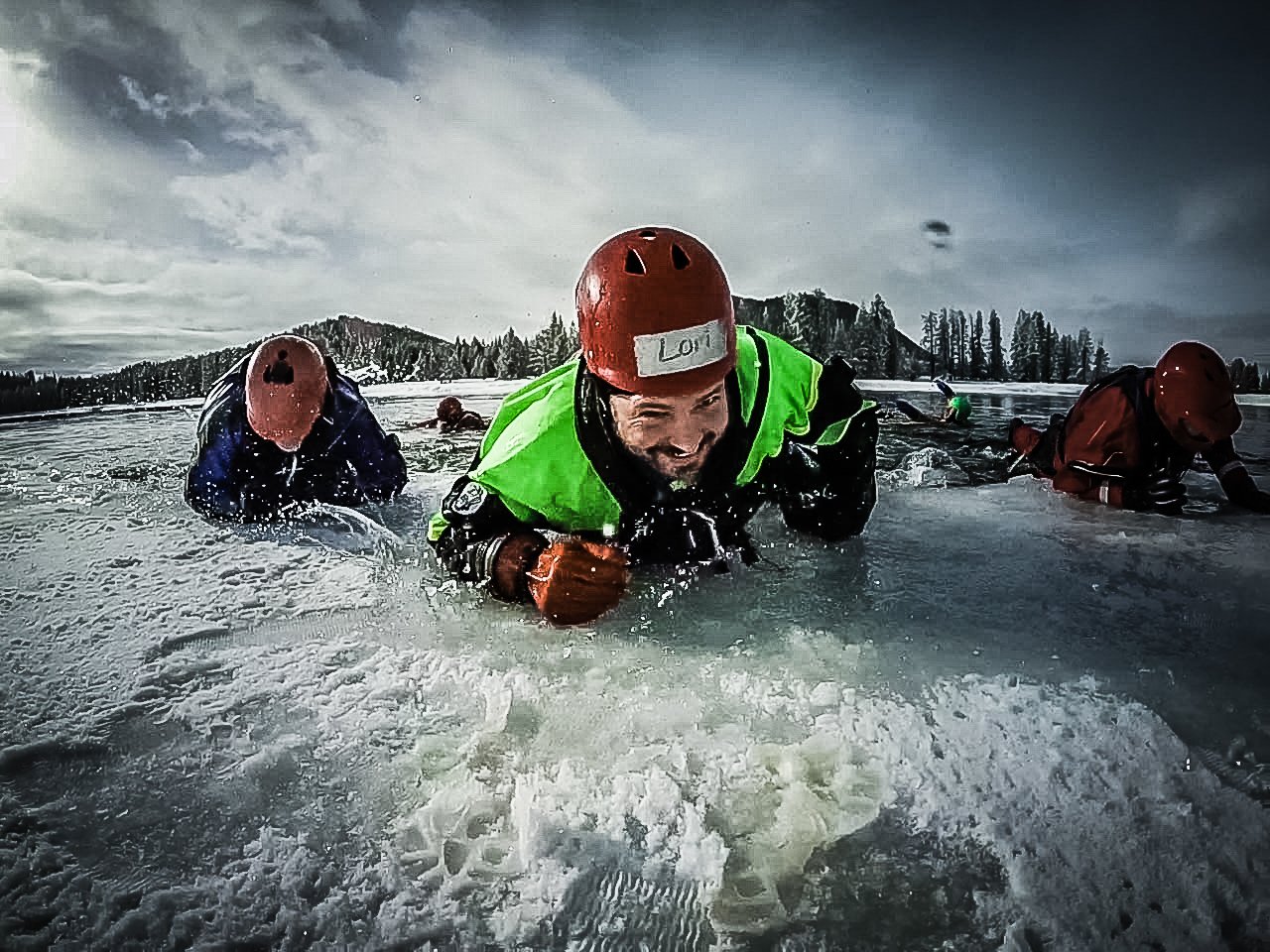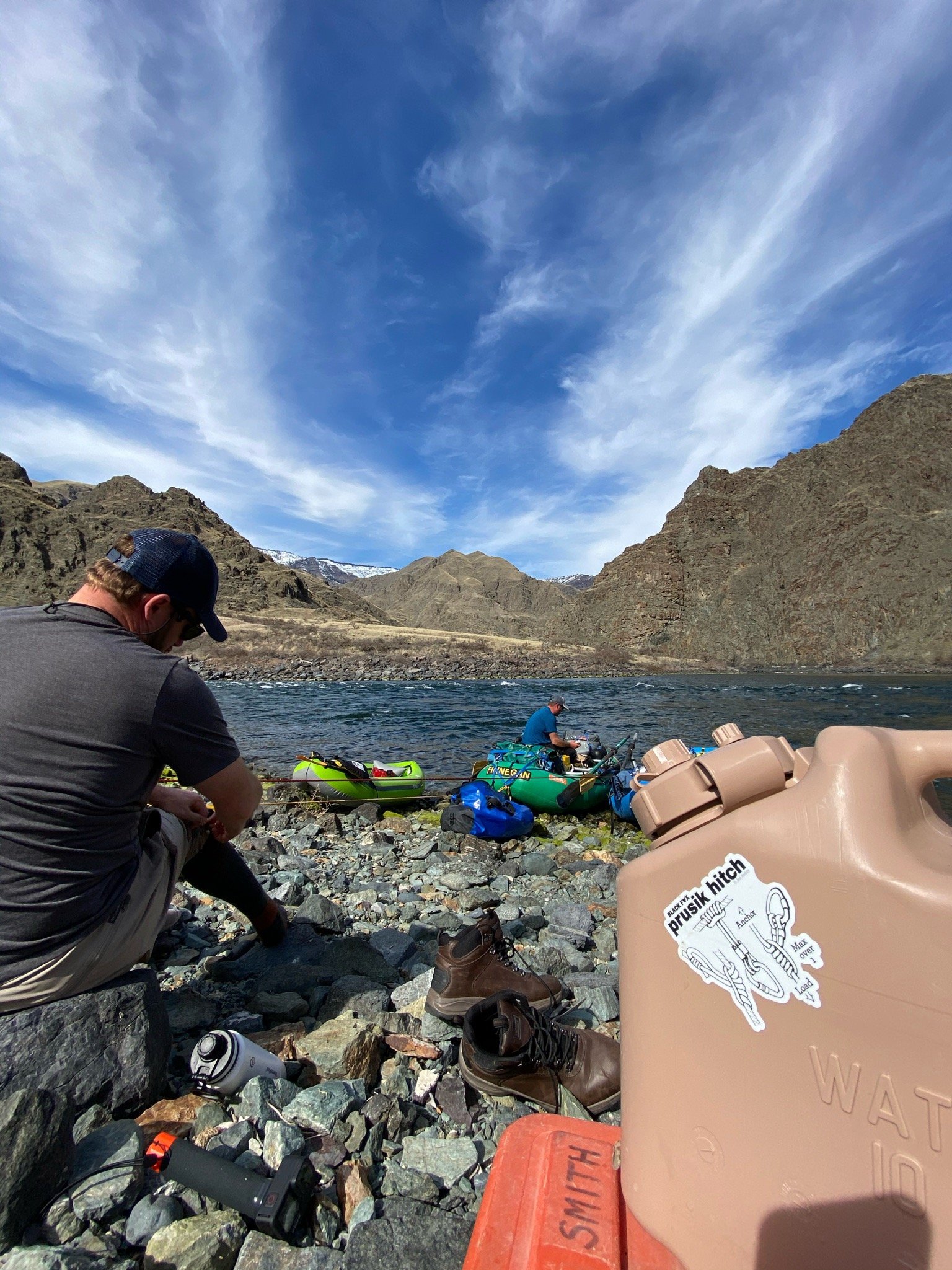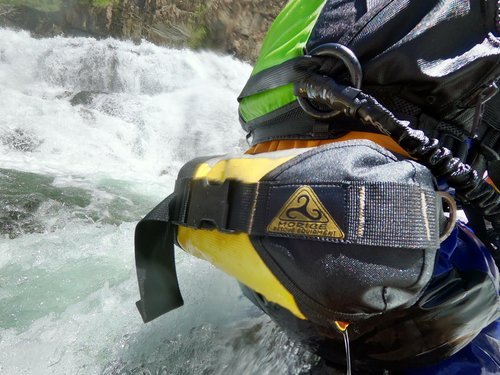
Ice Rescue Technician
Valid for 3 Years | Rescue 3 International | $360
This 2 day course is valuable training for emergency responders who may have to venture onto static surface ice to perform a rescue. In a rescue situation, it is already clear that part of the ice is unsafe, however understanding ice formation and strength is important to know when responding on larger bodies of water. We spend time learning about the properties of ice, organizing an ice rescue, and equipment in the classroom on day 1. Much of the emphasis of day 2 on ice portion of the course is on self rescue and the full range of techniques and specialized equipment that can be used for rescuing others. The curriculum also includes medical considerations for patient packaging and extrication challenges posed by cold water immersion.
Course Details
-
Rescue 3’s Ice Rescue Technician course teaches you how to operate in a safe manner in a high-risk environment. Ice rescue courses are especially valuable for emergency service personnel who may be called to respond to a person through the ice incident and for those who work or recreate on frozen lakes and rivers
The course is taught over two days. One classroom day and one day on the ice.
During the course, students will learn the unique properties and problems associated with working on and around the ice, personal equipment and self rescue techniques, rescuer safety, pre-planning for and size-up of ice rescue incidents, and victim rescue. Students are taught how to determine ice strength, recognize and deal with cold stress and hypothermia, and participate in various self and victim rescue drills.
-
18 years of age
Students must be able to walk on uneven and slippery surfaces.
Students must have adequate thermal protection for both in and out of the water, helmet, and PFD.
-
Surface Ice Rescue technician has 16 contact hours and is certified through Rescue 3 International. Certifications are valid for 3 years from the date of issue.
Re-certification is offered at a discounted rate with in the certification time frame. Surface Ice Rescue Technician or Surface Ice Rescue Specialist courses can both re-certify the Surface Ice Rescue Technician course.
if you wish to refresh your skills, we highly encourage you to audit courses - at no charge - any time during your certification period.
Upon successful completion you will receive:
A Certificate of Completion.
A wallet card with your own Rescue 3 registration number & date of expiration.
A detailed manual for future reference and review.
A personalized skill sheet (training record) documenting the skills & knowledge you performed or observed. You should give a copy of this to your supervisor as it is proof you have taken the course. Keep your copy in a safe place.
Your certification is granted by Rescue 3 International - the global leader in technical rescue training. One thing that sets Rescue 3 apart is the attention they pay to record-keeping. In the future, if you ever need to verify your credentials for employment or legal reasons, a phone call or email to Rescue 3 to obtain a copy of your training record is all that is needed.
-
Course fees are $360.
This includes a course book, whistle, patch, and all documentation.
Winter 24-2025
Locations: Wyoming, Intermountain West and Worldwide
Schedule a Custom Course
Need a custom course for your team? Black Fox Rescue Institute offers the option to schedule custom course dates at your location. Let us know what you need and we’ll work with you to set up a custom course that works for your team.
FAQs
-
In order to stay warm, safe, and be in a good mindset you will want to be dressed well. Your personal equipment should include either an Ice rescue suit or a drysuit. If wearing a drysuit, fleece, wool or poly-propylene (pants and top) and If extremely cold, a synthetic down jacket is recommended. Don’t forget wool or fleece socks for your feet, additionally neoprene socks over the drysuit socks add warmth Ice is slippery and falls are not uncommon, a water-sport or hockey helmet will work better than a heavy rescue helmet on the ice. A neoprene hood, balaclava or a hat that fits under your helmet will go a long way in keeping you warm. For your hands neoprene gloves or winter gloves with commercial dish gloves overtop will help you to maintain warmth in your hands so you can perform the rescue. For your feet water rescue boots, neoprene boots with a good walking sole, or old running shoes work much better than Insulated boots which get very heavy when submersed. Be sure to have traction control cleats such as STABILicers Maxx to allow you to stay upright and have traction when pulling. To provide for positive buoyancy you will want to have a Type III or IV PFD (lifejacket). If in a dry suit you will want to have a connection point on your chest. You can make one with 15’ to 20’ of webbing. Ice awls are very important for self rescue on glare ice and should be attached to you as a rescuer.
-
Wetsuits can provide enough thermal protection while in the water but once your are out they do not protect you from the cold air as well as a dry suit or Ice rescue suit. We do not recommend them for Ice Rescue classes where you will be outside for extended periods of time.
-
In order to receive a certification you are not required to do anything that seriously frightens you (a little nervous is normal). We proceed in small, simple steps that gradually build your ability to perform higher-level skills. However, if at any point you believe you have reached your limit, we support “Challenge by Choice.” If you wish to observe a specific activity only, please advise the instructor immediately. This will be noted on your skill sheet and should be shared with your supervisor so that they can make an informed decision about the activities for which you are best-suited. However, if you do not complete sufficient skills to your instructor’s satisfaction, your certification may need to be downgraded to a lower level. We recognize that caution and knowledge of personal limits is a sign of a safe worker.
-
The short answer is: one day in the classroom, followed by one day on-ice.
100% attendance is required to receive certification. Anyone more than 30 minutes late (without prior arrangement) will not be allowed to continue the course. This is for safety reasons and in the interest of fairness to other students.
Courses run approximately 8 hours each day (ie: from 8:00 4:30) with a break for lunch.
-
Ice Rescue Suits are waterproof and are designed with insulation built into them. This allows you to quickly don the suit over your street clothing. They have built in boots, gloves, neoprene hood and chest harness.
For class we recommend you wear synthetic layers under the suit to help manage perspiration over the course of the day.






Products
Rescue supplies, products and merchandise.
From the Field…
Customizing your river equipment to do the job you need it to do is an ongoing process. Learn the tricks and tips we have found to help with your throwbag
More courses… Swiftwater Rescue Techician
SWRT is the most popular Swiftwater Rescue course for rescuers needing to enter swiftwater hot zones. In addition to skills learned in the operations level course rescuers will also learn skills and techniques for going into the water to make contact with a patient, rope rescue skills and techniques for switwater, and acting as swiftwater rescue group supervisor for moving water incidents.








